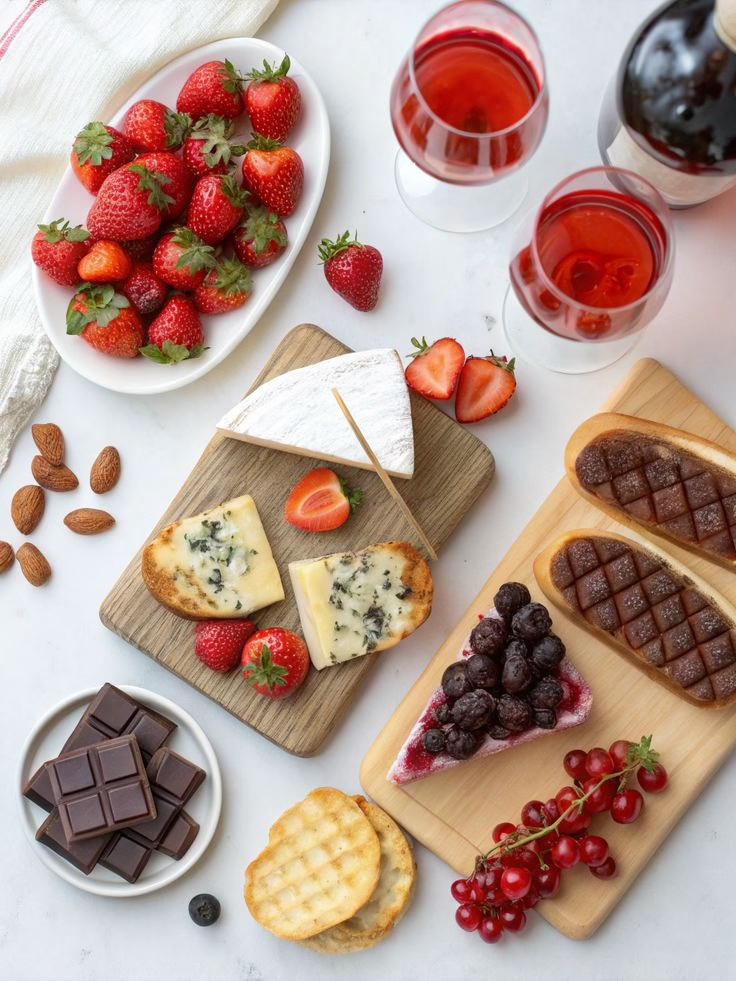Table of Contents
Introduction to Dessert Wines
Best Dessert wines are a delightful category of sweet wines that are specifically crafted to complement the end of a meal. Known for their rich sweetness, they often exhibit high levels of residual sugar due to various winemaking techniques, such as late harvesting, noble rot, or adding alcohol to halt fermentation. These wines typically feature a luscious mouthfeel and complex flavors that can range from fruity to nutty or even creamy, depending on the variety and method of production.
Types of Dessert Wines
Dessert wines encompass a variety of styles, each uniquely crafted to pair beautifully with sweet dishes or to be enjoyed on their own. Here’s a closer look at four popular types of dessert wines:
1. Late Harvest Wines
Late harvest wines are made from grapes that are left on the vine longer than usual, allowing them to reach optimal ripeness. This process can lead to higher sugar concentrations, resulting in sweet wines with complex flavor profiles. Common varieties include late harvest Riesling and Sémillon, which often feature fruity notes like apricot, pear, and honey. They pair well with cheese plates, fruit tarts, or even spicy Asian dishes, enhancing the meal’s flavors [Source: Wine.com].
2. Ice Wines
Ice wines are produced using grapes that have frozen on the vine, concentrating their sugars and flavors. This drastic method results in intensely sweet, rich wines. Predominantly made from Riesling and Vidal, ice wines showcase notes of peach, honey, and tropical fruits. Best enjoyed chilled, they complement desserts like cheesecake or poached fruits [Source: Wine Enthusiast].
3. Fortified Wines
Fortified wines such as Port and Sherry have had a distilled spirit (usually brandy) added to them, increasing their alcohol content and enhancing their sweetness. Port, particularly ruby and tawny styles, is rich and complex, pairing excellently with dark chocolates and rich cheeses. Sherry, especially the sweeter varieties like Pedro Ximénez, complements desserts like rich pastries or fig-based dishes [Source: Wine Spectator].
4. Sparkling Dessert Wines
Sparkling dessert wines offer a delightful effervescence along with sweetness. Notable examples include Moscato d’Asti and Asti Spumante, which provide floral and fruity flavors. Their light bubbles make them a refreshing choice alongside desserts such as fruit salads or light cakes. They are also a good match for spicy foods, balancing the heat effectively [Source: Food & Wine].
For more insights into various types of sweet wines, check out our guides on Roscato Wines and the best sweet wines to try [Source: The Spirited Glass].
Top Dessert Wines to Try

- Sauternes
A classic French dessert wine, Sauternes is renowned for its rich flavors of honey, apricot, and peaches, stemming from grapes affected by noble rot. Enjoy it with blue cheese or foie gras for a luxurious pairing. - Ice Wine (Eiswein)
Primarily produced in Germany and Canada, Ice Wine is made from grapes that have frozen on the vine. It boasts vibrant notes of tropical fruits and honey, making it a perfect match for lighter desserts or fruit tarts. - Port
This fortified wine from Portugal features flavors of black cherry, chocolate, and spices. Its sweetness and richness complement chocolate desserts exceptionally well, such as flourless chocolate cake or dark chocolate truffles. - Moscato
Known for its sweet, fruity profile, Moscato is often bubbly and offers flavors of peach, orange blossom, and apricot. It pairs wonderfully with light desserts like panna cotta or fruit salad. - Late Harvest Riesling
With a balance of sweetness and acidity, Late Harvest Riesling showcases flavors of honey, pear, and citrus. It’s a versatile option that pairs beautifully with cheese plates or apple pie. - Tokaji Aszú
Hailing from Hungary, Tokaji Aszú is celebrated for its complex flavors of dried fruit, nuts, and spices. Its rich profile pairs nicely with rich desserts like almond cakes or crème brûlée. - Vin Santo
A traditional Tuscan dessert wine, Vin Santo is often served with cantucci (almond biscuits). Its flavors of raisin, caramel, and nut make it a delightful choice for dessert.
These selections represent a range of styles and flavor profiles that can cater to different palates and occasions, enriching any dessert experience. For more on pairing wines with desserts or alternative sweet wines, check out our guides on sweet wines and wine glass servings.
For further exploration of dessert wine styles and their attributes, consider our detailed articles on specific types of sweet wines like Roscato wines.
Pairing Dessert Wines with Food
Pairing dessert wines with the right dishes can enhance the dining experience. Rich desserts like chocolate torte or crème brûlée match splendidly with dessert wines as their sweetness and complexity can cut through the richness of the food. Additionally, savory foods like blue cheese can create a surprising yet delightful contrast with sweet wines, enhancing both the wine and the dish’s flavors [Source: Food & Wine].
Conclusion: Savoring Your Dessert Wine Experience
To fully savor your dessert wine experience, consider these key tips that encompass serving suggestions and mindful tasting practices:
- Optimal Serving Temperature: The ideal temperature for most dessert wines is between 45°F and 50°F (7°C to 10°C). This enhances the sweetness while allowing the complex flavors to shine through, making each sip deliciously enjoyable [Source: HuffPost].
- Glassware Selection: Choose narrower glasses such as smaller white wine or dessert wine glasses to help concentrate the aromas and enhance the tasting experience. This allows for better aeration and brings the wine’s bouquet to the forefront [Source: HuffPost].
- Mindful Tasting Technique: Approach tasting with intention. Begin by observing the color and clarity. Next, swirl the wine gently to aerate it, then inhale deeply to appreciate the aromatics. Take small sips, letting the wine linger on your palate to fully capture its flavors. Consider noting any specific fruit notes, sweetness levels, and acidity, contributing to a richer sensory experience.[Source: HuffPost].
- Food Pairings: Pair dessert wines with complementary foods; for instance, rich cheeses, chocolate desserts, or fruit-based dishes can intensify the overall tasting experience. The interaction between food and wine can reveal new flavors that elevate both components [Source: The Spirited Glass].
- Enjoying with Friends: Dessert wines can be an excellent choice for social gatherings. Sharing different bottles can provide a fantastic opportunity to explore various profiles and preferences, creating an engaging experience around the table. Basing discussions on each wine’s characteristics can further enhance the tasting evening.[Source: The Spirited Glass].
By keeping these tips in mind, you can refine your approach to dessert wines, ensuring a rich, flavorful experience that celebrates every sip.
Sources
- Food & Wine – How to Pair Dessert Wine
- Food & Wine – Moscato: 10 Great Bottles
- HuffPost – Wine Away Stain Remover
- The Spirited Glass – Best Sweet Wines to Try
- The Spirited Glass – How Many Wine Glasses in a Bottle?
- The Spirited Glass – Roscato Wine Guide: Types, Flavors, and Where to Buy
- The Spirited Glass – Sweet Red Roscato: A Beginner’s Guide
- The Spruce Eats – Understanding Tokaji Wine
- Wine.com – Late Harvest Wines
- Wine Enthusiast – Ice Wine: What You Need to Know
- Wine Enthusiast – Dessert Wine 101: What Is Dessert Wine?
- Wine Spectator – What Is Port Wine?
FAQ
What is dessert wine?
Dessert wine is a type of wine that has an alcohol content greater than 14 percent but not more than 24 percent by volume and is sweet enough to be served alongside or in place of dessert. Examples include variations like late-harvest, botrytis-affected, and fortified wines[1][2][5].
How is dessert wine made?
Dessert wines are made through several methods, including late harvesting of grapes, allowing grapes to rot using noble rot (botrytis) to raisinate the grapes, and by adding brandy to fortify the wine[3][4][5].
What kinds of grapes are used for dessert wines?
The types of grapes used can vary widely. For example, Sauternes uses Sémillon, Sauvignon Blanc, and Muscadelle grapes. Other types include Riesling, Chardonnay, and various others depending on the region and production method[2][4].
How should I pair dessert wine with food?
Dessert wines can be paired with a variety of sweet and rich foods like cheese, chocolate, and fruit-based desserts. Specific pairs include Sauternes with cheese and foie gras, Port with chocolate, and Moscato with fruit salads[2][4].
Can I store dessert wine for a long time?
Yes, many dessert wines can be aged for several years. In fact, some fortified wines can age up to 15 years or more, developing darker, richer flavors that enhance their complexity[2][5].
Should I enjoy lighter sweet wines quickly?
Lighter sweet wines, like many dry wines, are best enjoyed quickly to appreciate their fresh flavors. However, many prefer to savor complex sweet wines over a period, especially those aged for several years[2].
